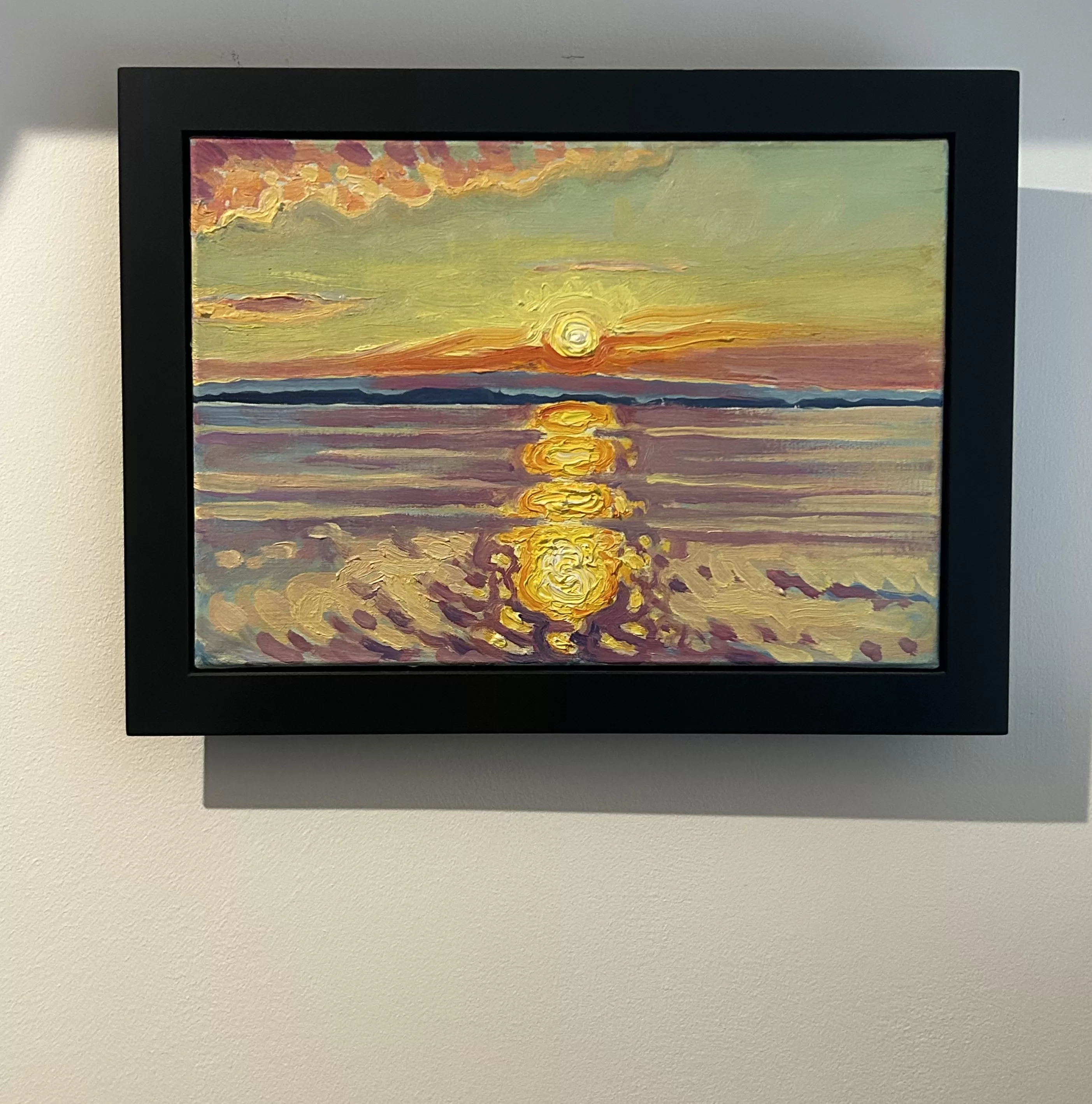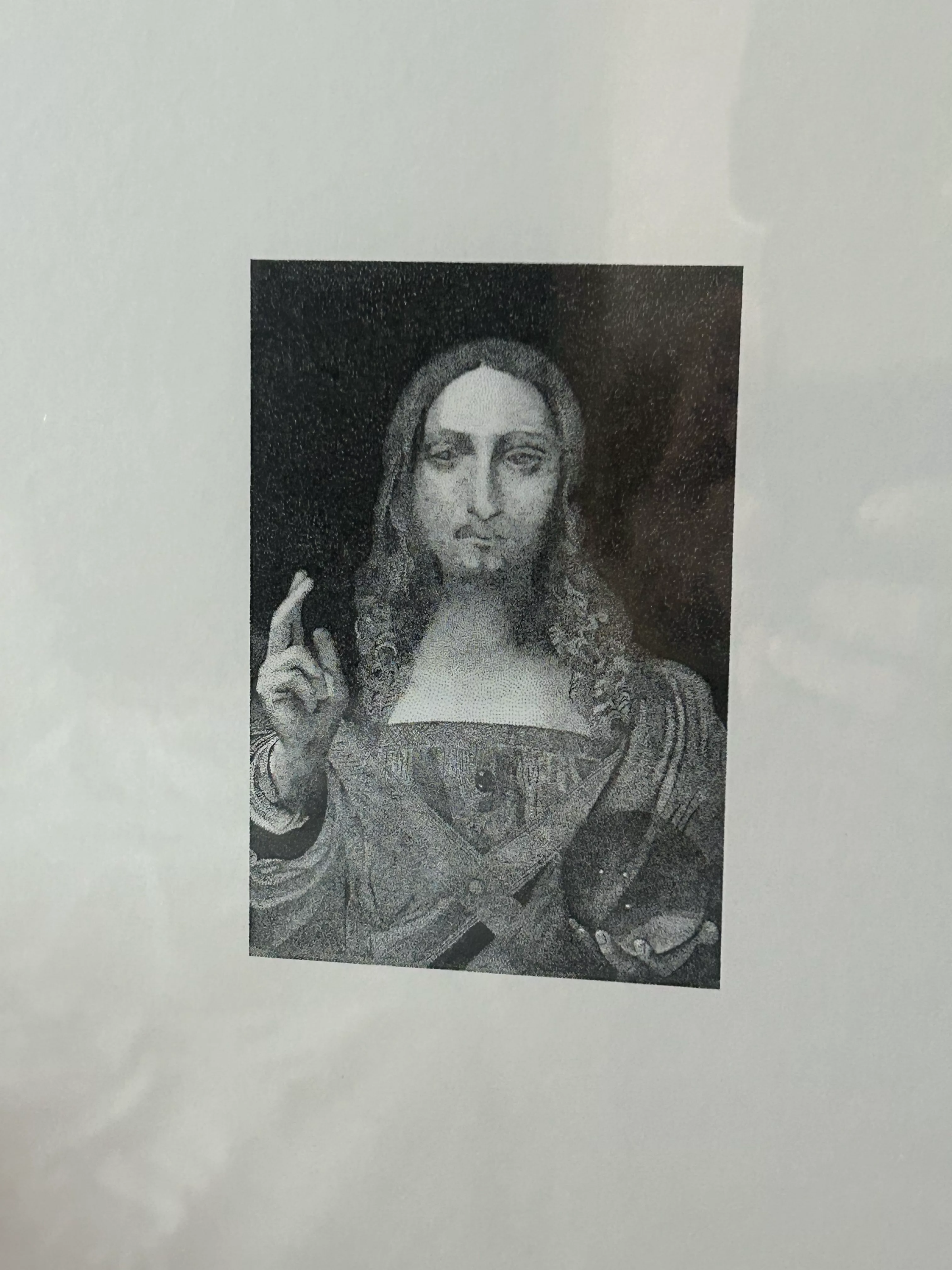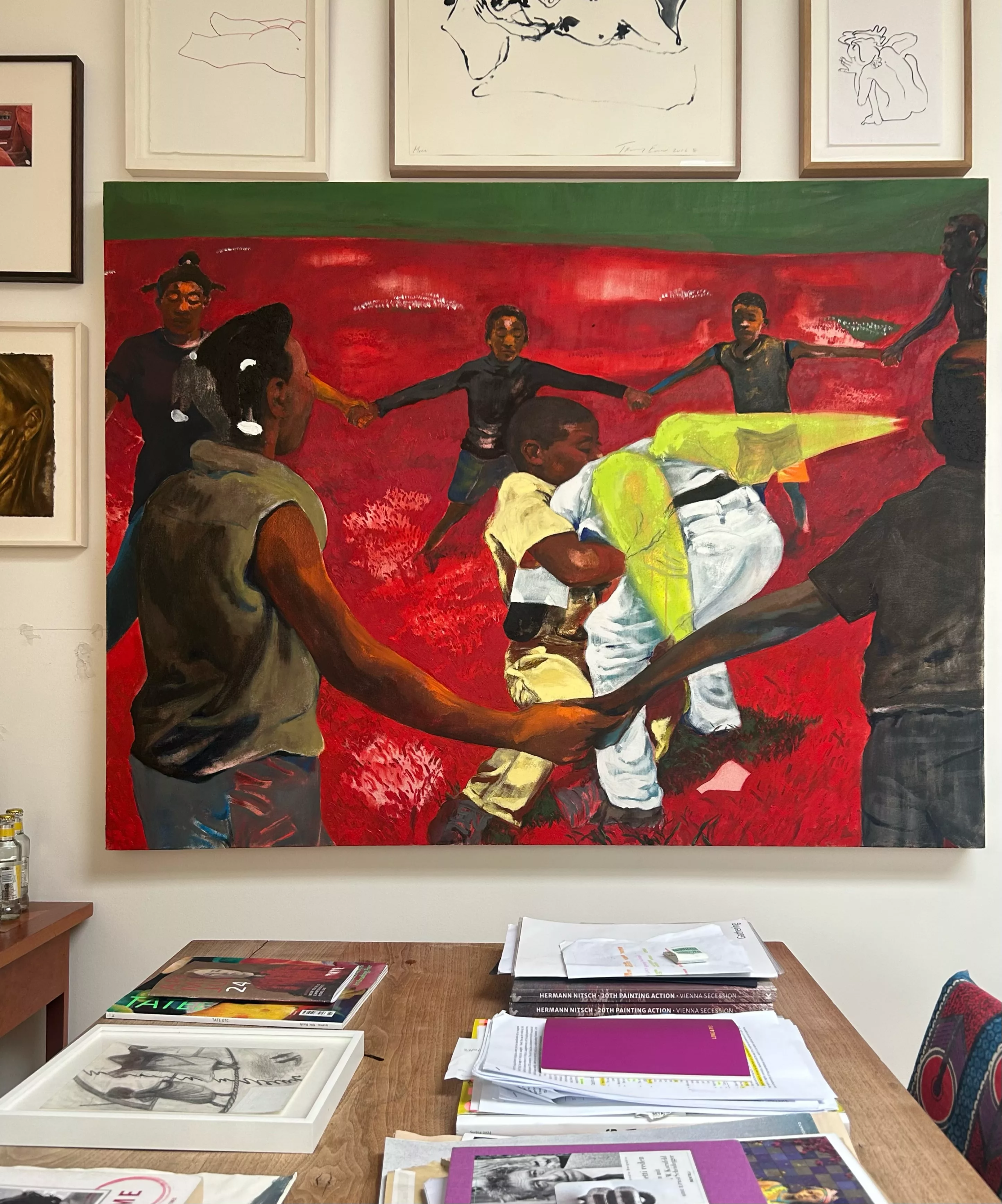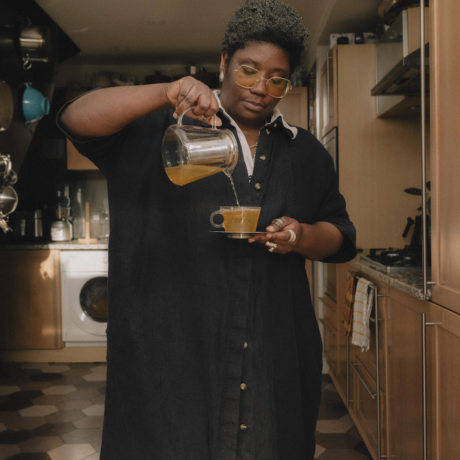Welcome to Elephant writer Sofia Hallstrom’s new column ‘Brainwave,’ where artists and gallerists share the objects, spaces, and places that have profoundly influenced their work and practice. In this inaugural piece, Hallstrom sits down with Alex Flick, the founder of Gathering, a contemporary art gallery that has rapidly gained international acclaim.
Founded in the heart of Soho, London, in 2022, Gathering has recently expanded to a picturesque new location in Sant Miquel de Balansat, Ibiza. It is a space which also includes a restaurant named after Alex’s daughter, Mira. Gathering’s influence continues to grow globally, representing a diverse roster of artists including Emanuel de Carvalho, Wynnie Mynerva, and Tai Shani and showcasing works by renowned artists such as Phyllida Barlow, Louise Bourgeois, Jesse Darling, Isa Genzken, Matthias Groebel and Martin Kippenberger, while also participating in art fairs in Seoul, Milan, Hong Kong, and New York.
I am chatting with Alex in London at the gallery, a week after the opening of the new Gathering space in Ibiza. The current show at Gathering’s Ibiza space brings together three artists—Kristian Kragelund, Rannva Kunoy, and Jennifer Tee. Each artist occupies a self-contained space within the multi-level gallery, presenting works that explore formalism through unconventional materials. This exhibition, titled Substance, highlights the diversity of their practices while unifying them through broad, almost sculptural abstraction.
AF: The three objects that I want to share are three artworks that I have hanging in my apartment in London.

AF: The first is a landscape painting titled No. 54 (1996) by Jean-Frédéric Schnyder, a Swiss artist born in 1945 who is represented by Galerie Eva Presenhuber. This painting was given to me by my father when I was 16 years old, and Schnyder was born the same year as my father, which is also meaningful to me. This painting stands as a symbol of my father. My parents separated when I was seven, and I lived with my mother in the UK, rarely seeing my father. That was tough and made my childhood insecure. However, my father became a significant figure in my life later on, especially after my mother passed away. Despite almost two generations between us, he has been an incredible support, teaching me a lot about art. This painting symbolises our bond and the merging of different art styles and generations. It’s not very valuable in terms of money, but it is very valuable to me because not only is it a landscape painting, but there are so many references within it to historical movements that became important to me when I studied history. Years later, in my 20s, these movements were still significant to me. For me, this piece captures those key moments and developments in art history. The artist’s style reminds me of Impressionism, particularly with its impasto technique.

AF: The second painting depicts the Salvator Mundi by Leonardo da Vinci, famously sold for a record price. It was recreated in a pointillist technique by a longtime friend and talented artist, Thomas Hutton. We did a show together when I was still practising sculpture. At that moment, I decided not to pursue an art career, while he went on to study at Yale. We’ve collaborated many times over our 20-year friendship. Hutton’s style involves thousands of little dots, which is quite amazing. This painting is important to me because of my mother. I was raised in a very strict Catholic home. Although I am not a practising Catholic now, those teachings instilled in me a sense of something greater. I’m now agnostic, believing in the broader humanity. This piece reflects my complex relationship with my mother and the Catholic Church, symbolising a conversation about heritage and friendship.

The third and final painting hangs where I spend most of my time: my kitchen and living room. It’s by a young American artist, Taylor Simmons, who is doing very well now. This painting is important to me because it reminds me of my favourite artist in history, Gauguin. This piece captures the magic of Gauguin’s work, especially in the way it portrays angels wrestling. The colours and composition are brilliant, and I can look at it endlessly. It ties into my own upbringing and my first steps into professionalism. I first saw this painting at a gallery in London. It was slightly smaller than the one I own. I was captivated by its reinterpretation of Gauguin’s work. I went on a mission to make friends with the artist and convinced him to create a second version for me. Although it wasn’t expensive, it holds immense value for me. Simmons’ work is a mix of Gauguin and Matisse, and I find it incredibly compelling. This painting is something I can’t imagine living without.
SH: What inspired you to start Gathering in 2022 in London?
AF: By the time I’d reached my early 30s (I am 38 now), I had realised that what I most enjoy is working with artists. I came to understand that this is where my strongest skills lie. I had a bit of artistic training but couldn’t quite fit into the mindset of most people working in galleries. I remember spending hours watching and thinking, “Wow, this is one of the most complex, challenging, and fascinating jobs.” I fell in love with the constant change and the diversity of people and characters I encountered. When you create and people really believe in something, it’s incredibly fulfilling.
I started a project space called Unit 9 in the East End, in the same building as Emalin. They opened downstairs, and I opened upstairs. We became good friends. It was completely wild because I didn’t really know what I was doing. I approached it with the idea, “Okay, the rent is quite cheap. I don’t have to pay much, and I can sell art to cover my costs and make some money. So why not do this crazy ambitious program, mainly with site-specific installations?” But, as often happens, I ran into issues. I always needed more resources and eventually realised I was losing money. I was winding down when COVID hit, which was actually perfect because it allowed me to rethink my approach.
The name Gathering comes from a sense of loneliness and isolation I felt. I thought about the importance of gathering people, ideas, and creativity together. It was a boring time, but by then, in my 30s, I realised I had the necessary skills to start anew. I had an artistic network and some connections built over 18 to 20 years. I felt I could do a really good job for the artists and contribute something meaningful to the scene.
I was able to secure a space and started ambitiously, headlining with Tai Shani. Many people were skeptical. They said, “Okay, let’s see what he can do.” Over the last two years, we’’ve consistently tried to maintain high standards and deliver quality, which has led to recognition from people I really value—whether they are in publications, magazines, writers, artists, critics, or collectors. It’s been a truly rewarding experience.
SH: What motivated your expansion to Ibiza?
AF: It started well before I made the actual decision. During the first lockdown, and then the second lockdown, I was here [in London] with my daughter, Mira. It was terrifying and scary because we were all feeling so isolated. But in the later lockdowns, I began thinking about the island and realised it had everything I loved except for a nice gallery or museum. It was just missing that cultural element.
I couldn’t understand why this hadn’t been done properly before, especially given that holiday destinations often have great gallery spaces. With Ibiza becoming more of an all-year-round destination, I saw real potential there. The idea of expanding to Ibiza was in my mind from the very beginning, alongside our plans in London. It was always part of the vision to open a second space here within two years.
SHa: Do you plan to work with local artists in Ibiza?
AF: It’s interesting because I don’t want to limit ourselves to focusing primarily on the local area. If the right local artist comes along, we’ll definitely show their work, and we’re very much tied into the local community. We have a couple of events planned for the end of the summer that will be more locally focused. But the idea is also to bring big-city exhibitions to Ibiza.
What I think is more exciting for the local visitors is to see a gallery doing something that could be in New York or London. We’re really excited about this, and I think it’s going to be a fantastic experience.
SH: How does the art scene in Ibiza compare to London, and what opportunities do you think it offers?
AF: London’s and Ibiza’s art scenes are worlds apart. London is highly established, with an educated audience spoiled for choice. The expectations and level of education in London are much higher, and the art offerings are incredibly broad. It’s one of the top art destinations globally, which is exciting but also means the competition is fierce and the costs are high.
In contrast, Ibiza offers a unique opportunity. The audience is eager and hungry for contemporary art, which creates a different kind of excitement. We need to program intelligently, balancing what works in London with what will resonate there. It’s about finding the right fit for the island.
We’re bringing in artists like Bruce Nauman and Stefan Brüggemann, aiming to strike a balance between pushing boundaries and catering to the local appetite. The opportunity in Ibiza lies in being one of the few contemporary art offerings on the island, especially during the busy summer months when the island is well-visited.
SH How has the local community responded to the new space?
AF: The local reception has been fantastic. When we opened, the community welcomed us with open arms. Our restaurant has been extremely popular, mostly with locals. The local businesses, like the tobacco shop and nearby stores, have seen increased activity. For example, Pizza Joy sold three times as many pizzas on our opening weekend. The locals appreciate that we’re bringing something different to the area. If another boutique hotel opened next year, I’d be delighted. There are always generational locals who might be skeptical, but Ibiza has been a destination since the ’50s, and especially since the ’90s, it’s become a cultural hub. The locals recognize this and seem to appreciate our contribution.
SH: Can you talk about the transformation of the space in Ibiza from a takeaway restaurant to a gallery with a courtyard bar and restaurant?
AF: Yes, it was indeed a restaurant before. When we were location scouting years ago, we spotted that place and thought, “That would be perfect.” It was a takeaway restaurant at the time, and we quickly saw its
potential. The idea of transforming it into a gallery with a bar and restaurant came about pretty soon after that. We worked on negotiating and planning for quite some time.
One of the great things about the space was the existing kitchen. When we first saw it, we were impressed by its high quality. It was a fully equipped, professional kitchen, which is often a significant investment. This allowed us to focus our resources elsewhere in the transformation.
From the beginning, we were set on that location. We didn’t really look elsewhere because we knew it was the right fit for our vision. The space has really come together beautifully, and it now serves as a perfect venue for our gallery, bar, and restaurant, adding a unique element to the cultural landscape of Ibiza.
SH: You mentioned that Ibiza has a rich culture of enjoyment but has been missing a strong art offering. How do you see Gathering contributing to the cultural landscape of the island?
AF: Ibiza has always had this pirate spirit, a sense of adventure and freedom that the British took on, and it’s just a beautiful, diverse place. However, it hasn’t had as much of a cultural mainstream presence, especially in contemporary art. But that’s changing now. There’s a growing consciousness and appreciation for art here, and it’s been well-received. I wouldn’t be surprised if in the coming years, Ibiza becomes more recognized for its contemporary art scene.
At Gathering, we are constantly exploring what can be done to enhance this. Next year, we have plans set in stone for a contemporary art and sculpture festival. We’ll commission pieces to be displayed publicly in different parts of the island, making art accessible to everyone. Unlike a gallery where there might be a barrier to entry, this festival will be open and free for all. We want to integrate contemporary art into the daily lives of both locals and visitors. Whether people are visiting the gallery once a week or just grabbing a drink and encountering art, our goal is to contribute to the cultural richness of Ibiza in every way we can.
SH: With two locations now, what are your long-term goals?
AF: Our goal is to establish Gathering as a true entity of quality and substance, focusing on a wide array of artists. We aim to challenge and push boundaries, maintaining a high standard of excellence. We want to firmly position ourselves as a deeply European gallery, known for cutting-edge and radical practices. Our shows will continue to showcase innovative and daring work, always pushing the edge of contemporary art.
Words by Sofia Hallstrom





